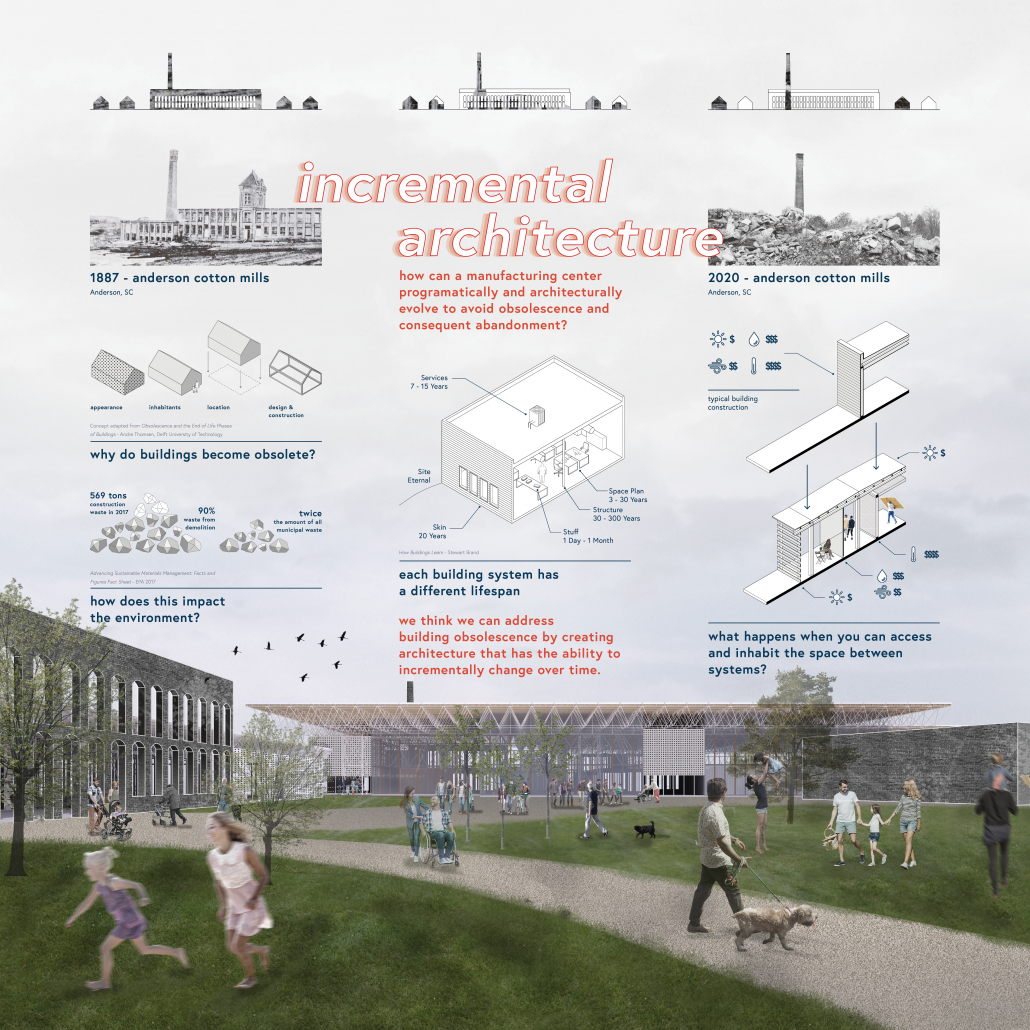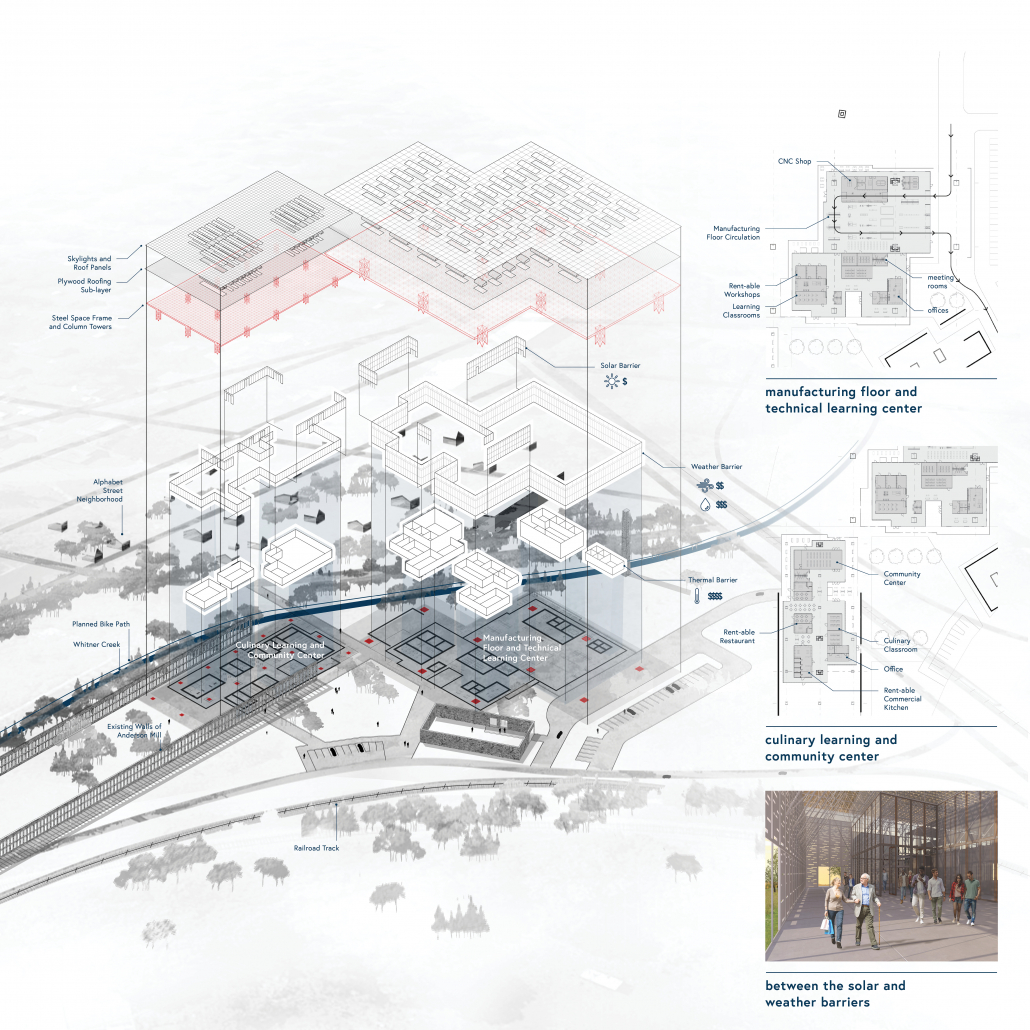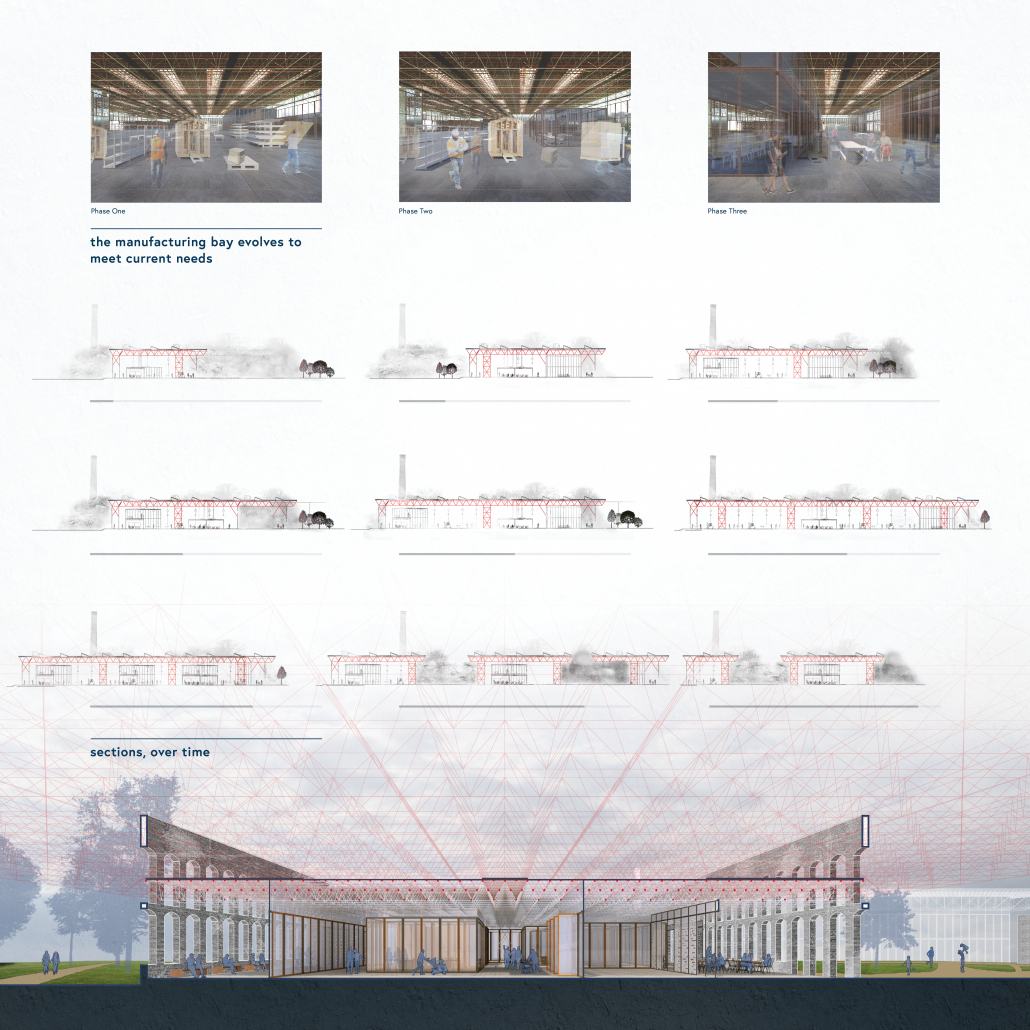2020 Steel Competition
Honorable Mention: Incremental Architecture
Megan Gotsch and Philip Riazzi
Incremental Architecture
Students: Megan Gotsch and Philip Riazzi
Faculty: David Franco, Daniel Harding, and Dustin Albright
School: Clemson University
Juror Comments
Incremental Architecture is selected for an honorable mention for its wonderfully simplified building type. The design challenges systematic structures and comes up with a unique expandable and transformative project.
Project Description
Incremental Architecture is about creating highly adaptable and accessible spaces that address changing user needs over time. This idea is explored in the town of Anderson, South Carolina.
Built in 1886, the town’s Anderson Textile Mill was an economic and cultural hub. It employed much of the town and provided housing to the surrounding “mill town” neighborhood typical of the southeast region. Changing demands and outdated technology ultimately caused the mill to close in 1991 and it has since sat empty, shuttering houses and forcing families to leave the area in search of better economic and social opportunities.
Incremental Architecture is about designing these vital community hubs in a way that the building can long outlive its first conceived use. The project was born out of a community need for education and job training. It will host skilled manufacturing jobs in a factory space producing deployable building components used in affordable housing. Tied in with the factory is community training, business incubation, and a food hub.
Through the use of a steel space frame, this highly adaptable and modifiable architecture is made possible. The space frame serves as the backbone for all of the building’s major systems. The interior spaces are wrapped in a series of successive skins: a thermal barrier, a weather barrier, and a solar barrier. These layers are separated for access, creating occupiable spaces between with different qualities of light and temperature. They all work together to create a high performing envelope.
A truly sustainable building is not only defined by its materials and energy use, but by its longevity and how it serves its community over time. Local economies depend on resilient and adaptable buildings. The environment depends on resilient and adaptable buildings. But most importantly, people depend on resilient and adaptable buildings.

 Study Architecture
Study Architecture  ProPEL
ProPEL 




